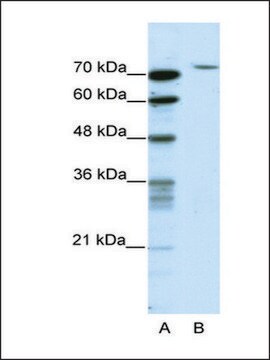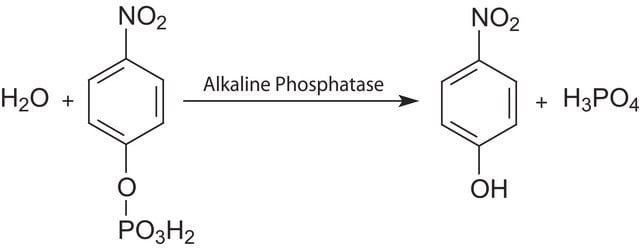Kluczowe dokumenty
SAB4200115
Anti-Reptin antibody, Mouse monoclonal
clone 2E9-5, purified from hybridoma cell culture
Synonim(y):
Anti-CGI-46, Anti-ECP51 (Erythrocyte cytosolic protein, 51-KD), Anti-INO80J, Anti-RUVBL2 (RuvB-like 2), Anti-RVB2, Anti-TIH2, Anti-TIP48 (TATA box-binding protein-interacting protein, 48-KD), Anti-TIP49B
About This Item
Polecane produkty
pochodzenie biologiczne
mouse
białko sprzężone
unconjugated
forma przeciwciała
purified from hybridoma cell culture
rodzaj przeciwciała
primary antibodies
klon
2E9-5, monoclonal
Formularz
buffered aqueous solution
masa cząsteczkowa
antigen ~51 kDa
reaktywność gatunkowa
human, rat, mouse
opakowanie
antibody small pack of 25 μL
stężenie
~1.0 mg/mL
metody
western blot: 0.5-1.0 μg/mL using whole extract of human MCF-7 cells
numer dostępu UniProt
Warunki transportu
dry ice
temp. przechowywania
−20°C
docelowa modyfikacja potranslacyjna
unmodified
informacje o genach
human ... RUVBL2(10856)
Opis ogólny
Immunogen
Zastosowanie
- immunoblotting
- immunoprecipitation
- immunofluorescence
- confocal microscopy
Działania biochem./fizjol.
Postać fizyczna
Oświadczenie o zrzeczeniu się odpowiedzialności
Nie możesz znaleźć właściwego produktu?
Wypróbuj nasz Narzędzie selektora produktów.
Kod klasy składowania
10 - Combustible liquids
Temperatura zapłonu (°F)
Not applicable
Temperatura zapłonu (°C)
Not applicable
Wybierz jedną z najnowszych wersji:
Certyfikaty analizy (CoA)
Nie widzisz odpowiedniej wersji?
Jeśli potrzebujesz konkretnej wersji, możesz wyszukać konkretny certyfikat według numeru partii lub serii.
Masz już ten produkt?
Dokumenty związane z niedawno zakupionymi produktami zostały zamieszczone w Bibliotece dokumentów.
Nasz zespół naukowców ma doświadczenie we wszystkich obszarach badań, w tym w naukach przyrodniczych, materiałoznawstwie, syntezie chemicznej, chromatografii, analityce i wielu innych dziedzinach.
Skontaktuj się z zespołem ds. pomocy technicznej






